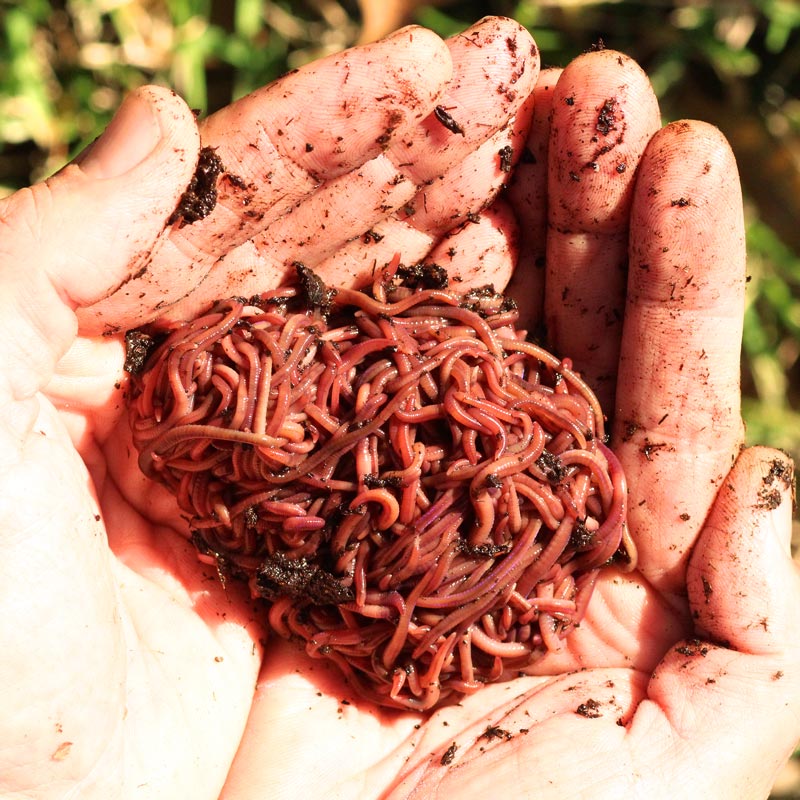Open the Secrets of Red Wigglers: Your Overview to Composting Success
The assimilation of red wigglers right into composting practices provides a considerable possibility for boosting dirt wellness and promoting sustainability. These microorganisms are not simply effective recyclers of natural waste; they provide a myriad of benefits that can change garden management. Recognizing their requirements and behaviors is essential for optimizing their capacity, from establishing a proper worm bin to feeding them the best products. As we check out the crucial components of effective vermicomposting, one may wonder just how these little creatures can cause a more lively and productive garden environment.

What Are Red Wigglers?
(Red Wiggler Express)Red wigglers, clinically referred to as Eisenia fetida, are a species of earthworm largely used in composting due to their impressive capability to disintegrate organic matter effectively. These worms are characterized by their reddish-brown pigmentation and a segmented body, typically determining between 3 to 4 inches in size. Unlike other earthworm types, red wigglers thrive in abundant, organic atmospheres, making them ideal for vermicomposting systems.
Indigenous to North America, they are commonly found in rotting leaves and compost heap, where they play an important duty in nutrient recycling. Their adaptation to staying in a moist, cardiovascular setting enables them to take in huge quantities of organic waste, damaging it down into nutrient-rich castings that improve dirt health.
Red wigglers duplicate rapidly, with a single worm efficient in generating several cocoons every week, each having multiple hatchlings. This fast recreation price adds to their performance in composting procedures. They like temperature levels between 60 ° F and 80 ° F, and their activity level boosts significantly within this range, additional helping in the disintegration process. Understanding the biology and habits of red wigglers is necessary for optimizing their potential in composting applications.
Benefits of Using Red Wigglers
Utilizing the power of red wigglers in composting uses many advantages that improve soil health and wellness and promote sustainable waste monitoring. These amazing microorganisms successfully break down natural issue, changing kitchen area scraps and lawn waste right into nutrient-rich vermicompost. This ended up product is remarkably helpful for plant growth, as it boosts soil structure, raises dampness retention, and enhances vitamins and mineral schedule.

(Lake Hickory Bait)Additionally, the existence of red wigglers in your composting system can accelerate the composting process, creating high-grade garden compost in a fraction of the time compared to typical methods. The spreadings created by these worms are also including useful microbes that better improve the soil ecosystem.
Setting Up Your Worm Bin
Producing a reliable worm bin is an uncomplicated process that can dramatically improve your composting initiatives. Worm containers can be made from plastic storage containers, wood boxes, or commercially available worm containers.
Next, prepare the bed linens product, which serves as the worms' habitat. A mix of shredded paper, cardboard, and coconut coir functions well, offering a comfy setting for the worms. Go for a bed linens deepness of concerning 4-6 inches. Dampen the bed linen lightly, guaranteeing it appears like a damp sponge without excess water merging at the bottom.

Feeding Your Red Wigglers
To guarantee the health and wellness and performance of your red wigglers, it is important to give them with a balanced diet that fulfills their nutritional requirements. Red wigglers prosper on a diverse array of natural products, which not just supply necessary nutrients yet likewise advertise efficient composting.
Start by incorporating cooking area scraps such as veggie peels, fruit cores, and coffee grounds. Prevent citrus fruits, onions, and garlic, as these can be destructive to worm health and wellness. Furthermore, introduce shredded paper, cardboard, and dry leaves to produce a well-aerated atmosphere.
Feeding frequency should be monitored; typically, worms can take in half their body weight in food weekly. It is crucial to avoid overfeeding, as excess food can lead to unpleasant smells and bring in insects. A great practice is to include food in percentages, enabling worms to process it before introducing extra.
Keeping wetness degrees is also important; the bed linens ought to perspire yet not soaked. Lastly, make certain to routinely check the temperature level and pH levels of the bin to make sure an optimum environment for your red wigglers, inevitably boosting their composting efficiency.
Harvesting and Using Garden Compost
An effective composting procedure with red wigglers finishes in the abundant, dark compost referred to as vermicompost, which can dramatically boost dirt wellness and plant development. Collecting this nutrient-dense product typically occurs every three to 6 months, depending on the size of your system and the quantity of natural issue being refined.
To collect, gently separate the compost from the worms and any undecomposed materials. One reliable approach involves moving the materials of the container to one side and including fresh bed linen and food to the void, urging the worms to migrate. After a few days, the garden compost can be accumulated from the contrary side.
It is important to make use of vermicompost properly to maximize its benefits. It can be used as a leading dressing for garden beds, combined right into potting dirt, or brewed into a nutrient-rich fluid plant food referred to as "worm tea." This application method helps to provide crucial nutrients straight to plant origins, advertising healthier growth. By including vermicompost into your horticulture routine, you not only recycle natural waste however also develop a successful ecosystem that sustains lasting gardening techniques.
Final Thought
In recap, red check here wigglers offer as phenomenal allies in composting efforts, changing organic waste into nutrient-rich vermicompost. By recognizing the optimal conditions for their environment, feeding needs, and garden compost harvesting techniques, gardeners can improve soil health and advertise plant vitality.